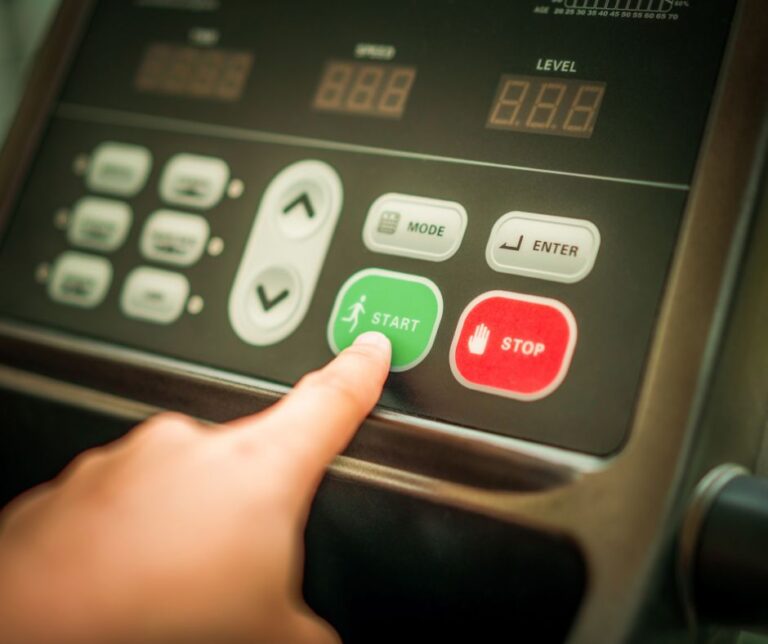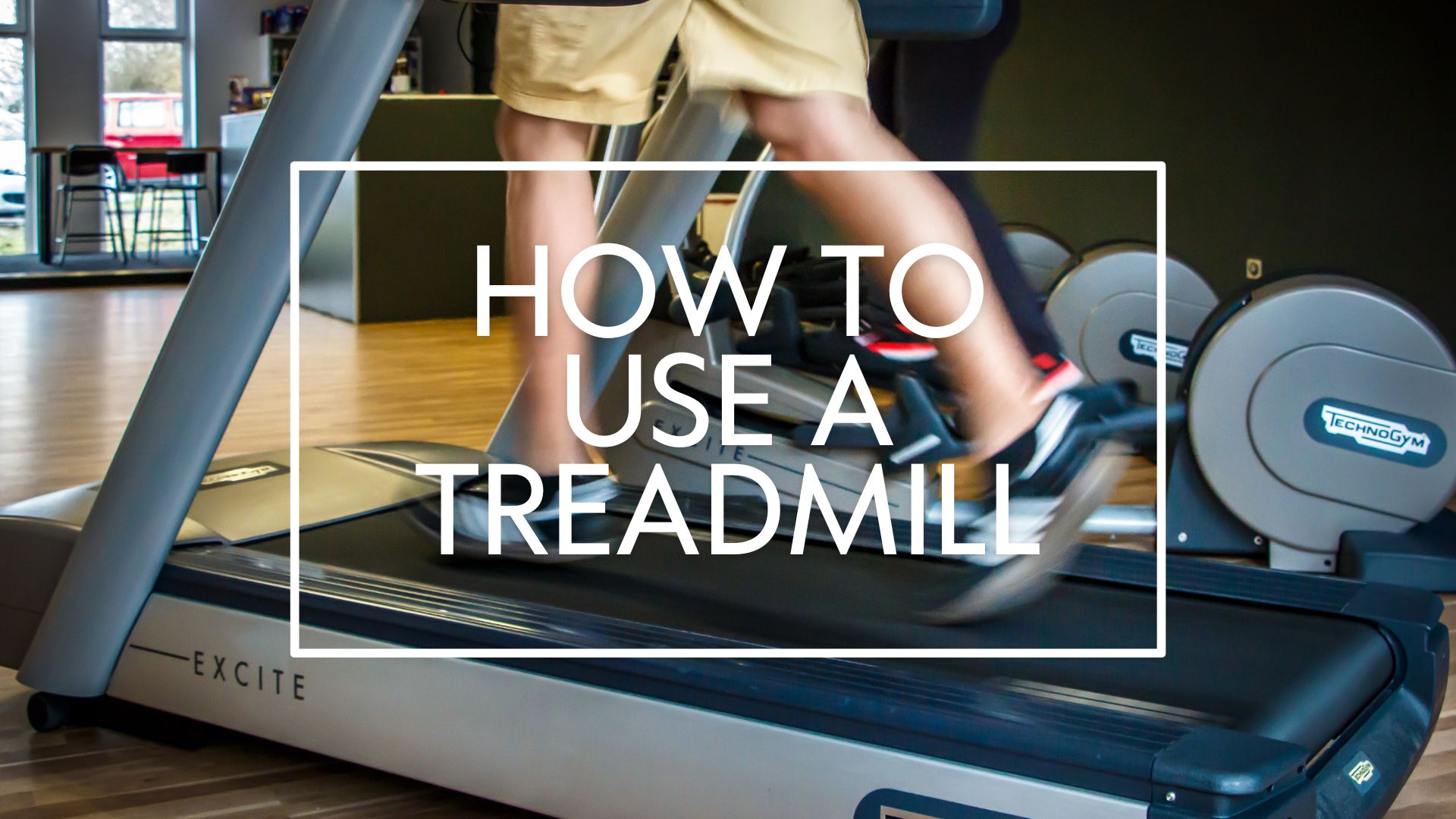Using a treadmill might seem as simple as stepping on and pressing start, but to truly harness the potential of this versatile exercise machine, you need a deeper understanding of its features and best practices. Whether you’re a beginner or looking to refine your treadmill routine, this comprehensive guide will walk you through everything you need to know to use a treadmill effectively and safely.
Understand the Treadmill Settings, Remote Control, Emergency Stop, and Safety Clip. Aside from knowing the benefits of treadmill workouts, it’s also important to familiarize yourself with its various settings and safety features before stepping on a treadmill.
The latest treadmills come with multiple buttons and controls, designed to help you customize your workout experience to your preferences and requirements. Also don’t forget to Lubricate Your Treadmill Belt regularly.
Get Familiar with the Control Panel
The control panel is your command center. Here, you will find buttons to adjust the speed and incline, program selections for different workout modes, and possibly even entertainment options. Take some time to press each button and see what it does before you start moving. This way, you won’t be caught off guard by sudden changes during your workout.

Understand the Safety Features
Every treadmill has safety features like an emergency stop button or a safety clip. The emergency stop is typically a large, red button on the panel that, when pressed, brings the treadmill to an immediate halt. The safety clip is a small device you attach to your clothing; if you drift back too far or fall, it will pull out a key that stops the treadmill. Make it a habit to use these features every time you work out.

1. Turn on Your Treadmill
Once you understand the basic controls and safety features, it’s time to turn on your treadmill and get acquainted with its display and additional features.

Use the Remote Control
Some treadmills have a remote control that allows you to adjust settings without reaching for the control panel. While this can be convenient, especially when you’re in full stride, always keep safety in mind. Please familiarize yourself with the remote’s functions before using it during a workout to ensure you don’t accidentally press the wrong button.
Start with the Basics
When you first turn on your treadmill, you’ll likely be greeted by a central display showing basic information such as time, distance, speed, and calories burned. That is called the dashboard, where you will track your progress throughout your workout. Get comfortable with reading this information at a glance.
Explore Advanced Features
Treadmills often have built-in programs that simulate various terrain or workout goals, such as fat burning or interval training. Some models also include heart rate monitors, Bluetooth connectivity for music or fitness apps, and even virtual scenery to make your run more enjoyable. Take some time to explore what your treadmill offers beyond the basic functions.
2. Customize Your Display
Adjust the display settings to show the most helpful information if your treadmill allows customization. You may be focused on heart rate training or want to monitor your pace. Tailoring the display to your needs can help you stay focused and motivated.

3. Keep Head and Body Upright
Your head should be up, your back straight, and your shoulders level. This posture will help you maintain balance and ensure your body is aligned correctly, reducing the risk of strain or injury. Avoid looking down at your feet or the display for extended periods, which can lead to neck and back discomfort.
4. Stay Centered on the Belt
Position yourself so you’re centered on the belt with ample room to move without feeling cramped. This central position helps you maintain balance and avoid the sides of the treadmill, which can be a tripping hazard.
5. Use the Handrails Sparingly
While the handrails are there for safety, relying on them too much can disrupt your natural walking or running form. Use them for stability as you start or stop your workout, but try to let go once you’re comfortable with the speed. Pumping your arms naturally, as you would when running outside, can provide a more effective and balanced workout.
6. Warm Up Your Body
Like any physical activity, a proper warm-up on the treadmill is essential to prepare your muscles and cardiovascular system for the workout ahead.

Start With a Walk
Begin your treadmill session with a slow walk to gradually raise your heart rate and loosen up your muscles. It can be as simple as walking leisurely for about 5 to 10 minutes. Pay attention to your body, and if you feel any tight areas, slow down and give yourself time to adjust.
Gradually Increase Intensity
After your initial warm-up, slowly increase the speed to a brisk walk or light jog, depending on your fitness level. Warm-up incrementally prepares your body for the more intense exercise to come. Remember, the goal of a warm-up is to increase blood flow, not to wear yourself out.
Switch To Dynamic Stretching
While walking, include dynamic stretching exercises, such as leg swings or lunges, to prepare your muscles further. Dynamic stretching can improve your range of motion and reduce the chance of injury. Once your body is warmed up, gradually increase the speed to your desired workout pace.
Find Your Comfort Zone
Begin by finding a pace that feels comfortable yet challenging. You should be able to maintain this pace for the majority of your workout without feeling overexerted. Remember, depending on your feelings, you can always adjust the speed as you go.
7. Monitor Your Body Stats During Workout
Pay attention to your breathing and heart rate. Slow down if you’re gasping for air or your heart rate is higher than your target zone. It’s important to build endurance gradually rather than pushing too hard or too fast.

Incremental Increases
If your goal is to increase your speed over time, do so in small increments. For example, increase the speed by 0.1 or 0.2 miles per hour every few minutes or another workout. These subtle increases allow your body to adapt without overwhelming it.
Walk Sideways for Lateral Movement
Walking sideways on the treadmill engages different muscle groups, particularly your abductors, often neglected in forward-running workouts. Start slow, hold onto the handrails for balance, and gradually let go as you become more confident.
Walk Backwards to Target Different Muscles
Like sideways walking, walking backwards on the treadmill can activate different muscle groups, such as hamstrings and glutes, and improve your balance and coordination. Start at a deficient speed and use the handrails until you’re comfortable with the motion.
Try Incline
Using the treadmill’s incline feature can significantly boost the intensity of your workout and target different muscle groups. Incline training simulates uphill walking or running, which increases the workload on your cardiovascular system and muscles. It can lead to more significant calorie burn and strengthen your legs, particularly your calves, quads, and glutes.
Start with a low incline, such as 1% or 2%, and gradually work your way up as your strength and endurance improve. Even a slight incline can significantly increase the intensity of your workout.
8. Mix it Up
Incorporate incline intervals into your workout by alternating between flat and inclined walking or running. Intervals not only keep your workout exciting but also challenge your body in different ways, which can lead to better fitness gains. If you feel overly tired, dizzy, or experience any pain, it’s important to slow down and take a break. Your body’s signals should always guide your workout intensity and duration.
9. Hydrate and Rest
After the main portion of your workout, slow down to a comfortable walk for 5 to 10 minutes to cool down. Taking rest helps your heart rate return to normal and can reduce muscle stiffness. Make sure to hydrate during your breaks and after your workout. If you’re doing multiple sessions in a day or a particularly long workout, give your body adequate time to recover before your next treadmill session.
Create a Schedule and Set Goals
Determine how many days a week you can realistically commit to working out and stick to that schedule. Whether it’s three days a week or every day, consistency will lead to improvements in your fitness level.
Having specific goals, such as running a certain distance or burning a set number of calories, can motivate you to stick to your routine. Track your progress and adjust your goals as you improve.
How to Become a Treadmill Pro
To become a treadmill pro, you must focus on refining your technique, increasing your understanding of the treadmill’s features, and being consistent with your workouts.
1. Be Consistent and Patient
Like any skill, mastering the treadmill takes time and practice. Be patient with yourself, and keep going even if you don’t see immediate results. Consistency will pay off in the long run.
2. Refine Your Technique
Good form on the treadmill can make your workouts more effective and reduce the risk of injury. Maintain an upright posture, use your arms naturally, and step lightly to avoid heavy impacts.
3. Learn Advanced Features
As you become more comfortable with the basics, explore advanced features on your treadmill, such as custom interval programs or apps that sync with your machine to track your workouts.
Common Mistakes To Avoid When Using a Treadmill
To get the most out of your treadmill workouts, be aware of common mistakes and learn how to avoid them.
Overstriding
Overstriding occurs when you take longer steps than necessary, leading to inefficient energy use and increased impact on your joints. Aim for shorter, quicker strides to maintain a natural running or walking gait.
Ignoring Right Posture
Slumping or leaning too far forward can strain your back and neck. Always keep your body upright and your gaze forward to maintain good posture.
Not Using the Safety Features
The safety features on a treadmill are there for a reason. Always use the safety clip, and know where the emergency stop button is if needed.
Using a treadmill effectively involves more than just pressing start. By understanding the treadmill settings, familiarizing yourself with the features, maintaining proper posture, warming up, varying your workouts, and avoiding common mistakes, you can maximize your treadmill experience. Remember to listen to your body, stay consistent, and enjoy the journey to becoming a treadmill pro.



